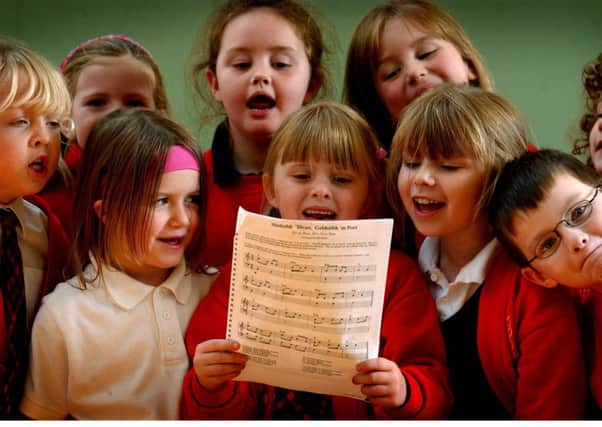Brian Wilson: Gaelic still needs - and deserves - to thrive


An Comunn, which owns the Mod “brand”, is celebrating its 125th anniversary. It is an organisation well used to criticism for being too Establishment, too stuck in Victorian tartanry, too Mod-oriented. However, nobody can deny its staying power or role in maintaining Gaelic’s profile when few were active in the field.
For most of its existence, An Comunn was the only Gaelic promotion body. Its strength lay with exiles and learners for reasons neatly explained by the late Professor Derick Thomson: “In Harris, for example, it might have seemed just as sensible to found an Association for the Encouragement of Breathing as to found a Branch of An Comunn; they spoke Gaelic anyway, just as they breathed”.
Advertisement
Hide AdAdvertisement
Hide AdThere are few places now in which that can be asserted with confidence. Yet there is nothing inevitable – and certainly nothing desirable - about the loss of a language and the rich culture it expresses. John MacLeod used his Mod presidential address to call for Gaelic in the Western Isles, where it is (just) still a majority language, to seek UNESCO listing under its Intangible Cultural Heritage programme.
The call was taken up by the local authority even if nobody is quite sure what it might mean in practice. John MacLeod believes international recognition that something of value is at stake, would be worth having. Such status might pressurise government to do more, particularly where Gaelic is still a community language.
In the 1970s and ‘80s, An Comunn Gaidhealach spread its wings, championing the case for Gaelic-medium schooling. I toured the big regional education authorities to promote that cause and Strathclyde was the first to open a Gaelic-medium unit, in 1985, and others followed.
By then, Gaelic was attracting political interest and the Scottish Office under George Younger became a positive force, creating a ring-fenced budget for Gaelic-medium education that survives to this day. They also established an advisory body, Comunn na Gaidhlig, intended to marginalise An Comunn Gaidhealach whose future role would be focused on national and local Mods.
Yet another official body – Bord na Gaidhlig – was added to the vocabulary in 2003 and, as with much else, its current role has been to centralise on behalf of the Scottish Government. Previously independent organisations have come under its budgetary control. An Comunn Gaidhealach is back to being virtually the only non-statutory Gaelic organisation still standing.
The ‘70s and ‘80s are looked back on as a golden age when young, articulate Gaels had the confidence to make demands and a lot was achieved in response. There is little of that going on now. Yet Gaelic still needs voices which will challenge government – regardless of political complexion - rather than simply be dependent upon it.
For example, there are still places where the absence of Gaelic-medium education is contributing to the avoidable demise of the language. At a time of huge cuts to local authorities, ring-fencing is more essential than ever – for pre-school, primary and secondary provision. If that case can be made for other aspects of Natural Heritage, why not for a language and culture that will live or die in Scotland alone?
The arrival of BBC Alba in 2007 responded to an overdue need but there are big questions about funding and the way in which the channel serves its reason for existing – to help sustain the language, rather than answer to a “numbers game” on viewing figures. Official status, legislated for in 2005, has delivered little in practice. On all these fronts there need to be demands and challenges.
Advertisement
Hide AdAdvertisement
Hide AdWhen the last chorus of Soraidh Leibh is Oidhche Mhath Leibh (the song of parting) has died down in Stornoway, reality will be the same. Gaelic is still on the ropes. The number of speakers may have bottomed out at 60,000 but the map of Gaeldom continues to shrink and its use in home and community is under constant pressure from the giant which surrounds it.
The growth areas for Gaelic-medium schooling are the cities – Glasgow, Edinburgh and Inverness, with most of the intakes having little or no connection to Gaelic backgrounds. While positive in itself, this trend can disguise the reality of decline in what are still optimistically referred to as “Gaelic heartlands”.
When An Comunn Gaidhealach was founded, 125 years ago, with the primary aim of emulating the Welsh Eistedfodd, there were more than 200,000 Gaelic speakers in Scotland and the bastions of Gaeldom extended to places like Arran, much of Perthshire and the western reaches of Buchan.
The miracle today is not that Gaelic is weak but that it survives and can still exhibit the vitality on display this week in Stornoway. An Comunn Gaidhealach has played its honourable partand long may it continue to do so.
Brian Wilson was the first designated Minister for Gaelic, in 1997.